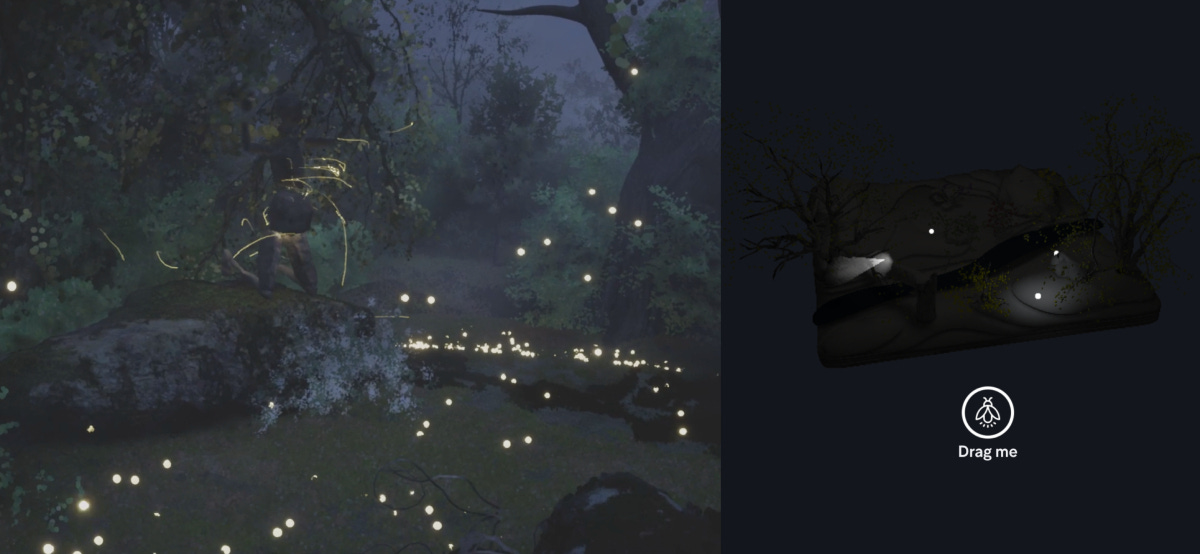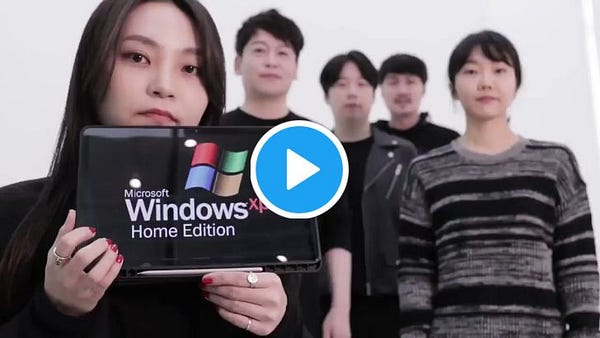Dream’s two week run has come to a close and I have thoughts!
TLDR; there was a lot of “WOW. Paradigm shift!” on Twitter and more measured fare in the press: “Gorgeous but thin,” (NYTimes), “a new arrow for the quiver,” (The Guardian).
It broke new ground. I enjoyed it.
Is there a “but”?
Dream was one beneficiary of a £16m demonstrator fund supporting four projects. The two-year research project culminated in a one-hour cross-artform/multiplatform/immersive* performance. The consortium, led by the RSC, includes Philharmonia Orchestra, Manchester International Festival, Marshmallow Laser Feast, Punchdrunk, Epic Games of Unreal Engine fame, University of Portsmouth and the list really does go on.
* add as appropriate.
A summary of this show reads a little like the stakeholder list because they’ve crammed an awful lot in: live performance, motion capture, gaming engine, virtual avatars, scale shifts for performer and viewer, audience participation, breaking the fourth wall, dynamic audio actors can control through movement (the literally brilliant-sounding Gestrument) and all this streamed live to a global audience.
As the golden particle dust settles, the first thing is to applaud the crew for producing anything at all with so many hands on the wheel. Dream’s feat is all the more impressive that it has laid such credible breadcrumbs to the future of live performance. Credit also to Audience of the Future Demonstrator, funded by Innovate UK, ie the UK Government, which gave a £14m emergency ferry contract to a startup without any boats. The Dream team didn’t have any boats either, but that was the point.
Disclaimer: I write this both as a sideline fanboy, nose pressed to screen, desperately wishing I was part of the gang, whilst also having run a three-day process to help them refine the MVP. At that stage (December 2020, which is basically yesterday) there was a lumpy swirl of bold ideas, incredible people, scary deadlines and a little less clarity than anyone was comfortable with.
PLATITUDE BINGO! Learn to be comfortable with discomfort.
The RSC have previous form with bleeding edge theatrical innovation. Their 2016 production of The Tempest, involving another tangled cohort featuring Intel, Imaginarium and Epic Games, was similarly ground-breaking in the technology meets live theatre Venn. We hosted an Artful Spark event in 2018 showcasing the mocap system, where Exec Producer Sarah Ellis said, “Younger audiences came for the tech and took away Shakespeare, while older audiences came for Shakespeare and took away a new appreciation of the Tech.”
To some extent, the same formula can be seen at the heart of Dream. The tech angle was part of the marketing plan and Twitter was alive with praise for the ‘curtain drop’ moment where we see both the virtual world and marker-clad actors in their MoCap volume. Lyn Gardner (long-time theatre critic) says, “this is not a show, it’s an experiment”, and one that’s apparently working. Of the 20,000 who attended the first three public performances, 25% were first time RSC attendees.
The visual and aural manifestation of the forest and its sprites was superb, a powerfully captivating blur of realities aptly conveying the enchanted forest Shakespeare originally described. As with any Marshmallow Laser Feast project, the art direction was sumptuous and the technical team did a brilliantly joined-up job squeezing all that richness through interweb pipes. However, the spoken lines - the most overt aspect of Shakespeare, if you like - were a little lost in the melee.
If at times the tableware outshone the cuisine, it’s understandable because (a) innovation, and (b) is really hard. Let’s think of Dream as the gateway-drug to the next phase of tech-enhanced theatre; unrefined, undoubtedly compelling but a little self conscious. Seeing performers demonstrate how they used their tools was fascinating but all too brief in a slightly bloated ‘how we did it’ section.
The thorniest bit to unpack is the audience participation, which was perhaps the weakest link but a valuable experiment. Firing fireflies into the virtual world (onto the stage!) was technically impressive and fun for a beat (I shudder at the hidden battles with latency) but nevertheless a cosmetic feature with little bearing on the overall show. That said, I cannot over state the size of the challenge - providing identifiable and meaningful agency to hundreds of mouse pointers is inordinately difficult. The key validation then, was the “freemium” model demonstrating that people will pay to play. Next step: build up the meaning.
Accessibility and inclusivity was apparent not just in the show’s high contrast user interface, keyboard access, closed captions, BSL version and sonic graphic but also that anyone in the world with internet access could tune in FOR FREE. Munch Pringles in your PJs if you need to. Bring your screaming children! Inclusivity carried right through to the conference roadshow as well, with each speaker adding a visual description to their intro. Clare Reddington kicked things off with: “I’m a white female with a blunt fringe wearing a sparkly gold top”, which I loved.
It was SxSW last week, the Austin, TX festival of music, media and technology, where the slightly clunky concept of “UK House”, a virtual pavilion for the UK’s creative industries, was trumpeting Dream. The speed networking and teaser reels (“The UK is ready to do business with YOU”) perfectly recreated the slightly desperate feel of international trade shows. Cringe aside, Dream is indeed a beacon for British creativity, all be it a heavily subsidised one that should not mask the pains of a reeling industry.
As ever, the biggest challenge with wrapping a ground-breaking project is how to usefully disseminate the R&D. Access, in other words. It cannot only be about “sharing the learning”. The tooling, infrastructure and human experience from Dream, along with some seed funding, must be made available to the broader cultural community.
That’s a dream worth celebrating.
Other treats
You need more cheesecakes in your life. They’re vegan, they’re delicious and they’re delivered to your door. Oreo. Chocolate Orange. Millionaire’s. Sicilian Lemon: cococheesecakes.com
It’s funny how things go viral. Back in the noughties, David and I used to create Flash games and his latest sensation is Sigil Engine, which the trend press picked up and now over 800,000 have been created. Try typing your intentions: sigilengine.com
A timelapse of children being very playful and very organised (Twitter)
And finally, a rather pleasing a cappella rendition of the Windows startup:
It’s Tuesday, there’s sawdust on my pillow from a week of smash-chopping the new flat and it finally feels like March: the basil plants are overrun with aphids.
How are you doing? I’ll be back in <what is time these days anyway?>
B.
PS - The most clicked link last time around was a Miro tip, so here’s more musing on achieving consensus, adapted from a physical exercise (thank you Ben Whitnall). Place your goal in the centre of the circle and the elements to be evaluated, as separate PostIts, on the black line. Participants ‘stand around the table’, selecting a PostIt to start with. They nudge it inwards a step if it helps achieve or reinforce the goal and nudge it outwards if it does not. Everyone takes it in turns (moving ‘around the table’) so that each PostIt is nudged in or out by each person. At the end, a filtered picture should emerge. We used it fleetingly in the Dream MVP workshop - simplified snapshot below!







